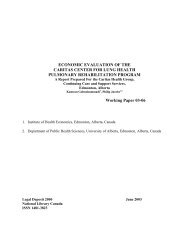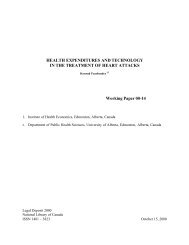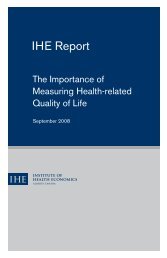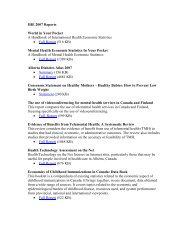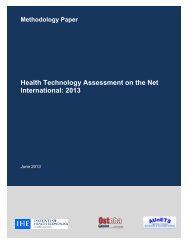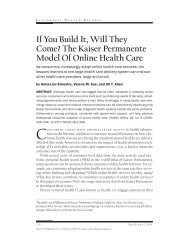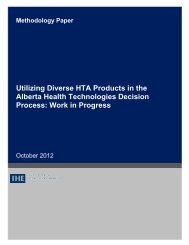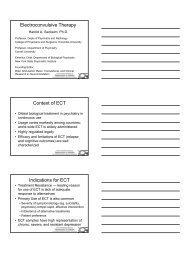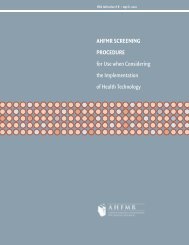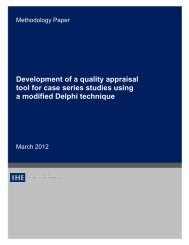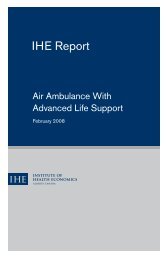Bariatric treatments for adult obesity - Institute of Health Economics
Bariatric treatments for adult obesity - Institute of Health Economics
Bariatric treatments for adult obesity - Institute of Health Economics
- No tags were found...
You also want an ePaper? Increase the reach of your titles
YUMPU automatically turns print PDFs into web optimized ePapers that Google loves.
CostsMarginal analysisThe cost analysis considered medication costs and direct healthcare costs <strong>of</strong> <strong>obesity</strong>- anddiabetes-related complications.Total costs: not reportedThe ICER was €14,000 and €13,600 per QALY gained, in Sweden and Switzerland,respectively.ConclusionThe analysis supported the use <strong>of</strong> orlistat <strong>for</strong> overweight and obese patients with T2DM.7 Study 23 Authors/publish year: Lamotte/2002; country: Belgium; study type: CEA; setting: primarycare; study perspective: healthcare consumerObjectivePopulationInterventionTime Horizon/discount rateCurrency/priceyearTo assess clinical and economic consequences <strong>of</strong> treating obese patients with T2DM withorlistat as compared to no treatment.Patients with <strong>obesity</strong> and T2DM.Treatment with orlistat was compared with placebo.10 years/3%€/2000Result<strong>Health</strong> outcomesA Markov model that incorporated <strong>obesity</strong>- and diabetes-related complications wasconstructed to predicted health outcomes and costs over a long run <strong>for</strong> four sub-groups:patients with event-free pr<strong>of</strong>iles, those with arterial hypertension and withouthypercholesterolaemia at the beginning <strong>of</strong> the study, those with hypercholesterolaemiabut without arterial hypertension at the beginning <strong>of</strong> the study, and those with arterialhypertension and hypercholesterolaemia.Compared to placebo, orlistat generated an incremental LY <strong>of</strong> 0.08, 0.204, 0.227, and0.474 <strong>for</strong> the sub-groups, respectively.Costs Compared to placebo, the incremental costs <strong>for</strong> those patient groups were €1608, €1514,€1678, and €1641, respectively.Marginal analysis Compared to placebo, the cost per LY saved was €19,986, €7,407, €7388, and €3462,respectively.ConclusionOrlistat was a cost-effective option <strong>for</strong> the treatment <strong>of</strong> obese patients with T2DM.8 Study 15 Authors/publish year: Lacey/2005; country: Ireland; study type: CUA; setting: primarycare; study perspective: healthcare systemObjectivePopulationTo assess the cost-effectiveness <strong>of</strong> the adding orlistat to a calorie-controlled dietoverweight and obese patients.Individuals aged 18 or older with a BMI ≥ 28 kg/ m 2 , no diagnosed T2DM, and beingable to lose 2.5 kg during 4 weeks be<strong>for</strong>e starting treatment.InterventionTime Horizon/discount rateThe orlistat in combination with a calorie-controlled diet was compared with diet alone<strong>for</strong> overweight and obese patients.11 years/3%<strong>Bariatric</strong> <strong>treatments</strong> <strong>for</strong> <strong>adult</strong> <strong>obesity</strong> 190



